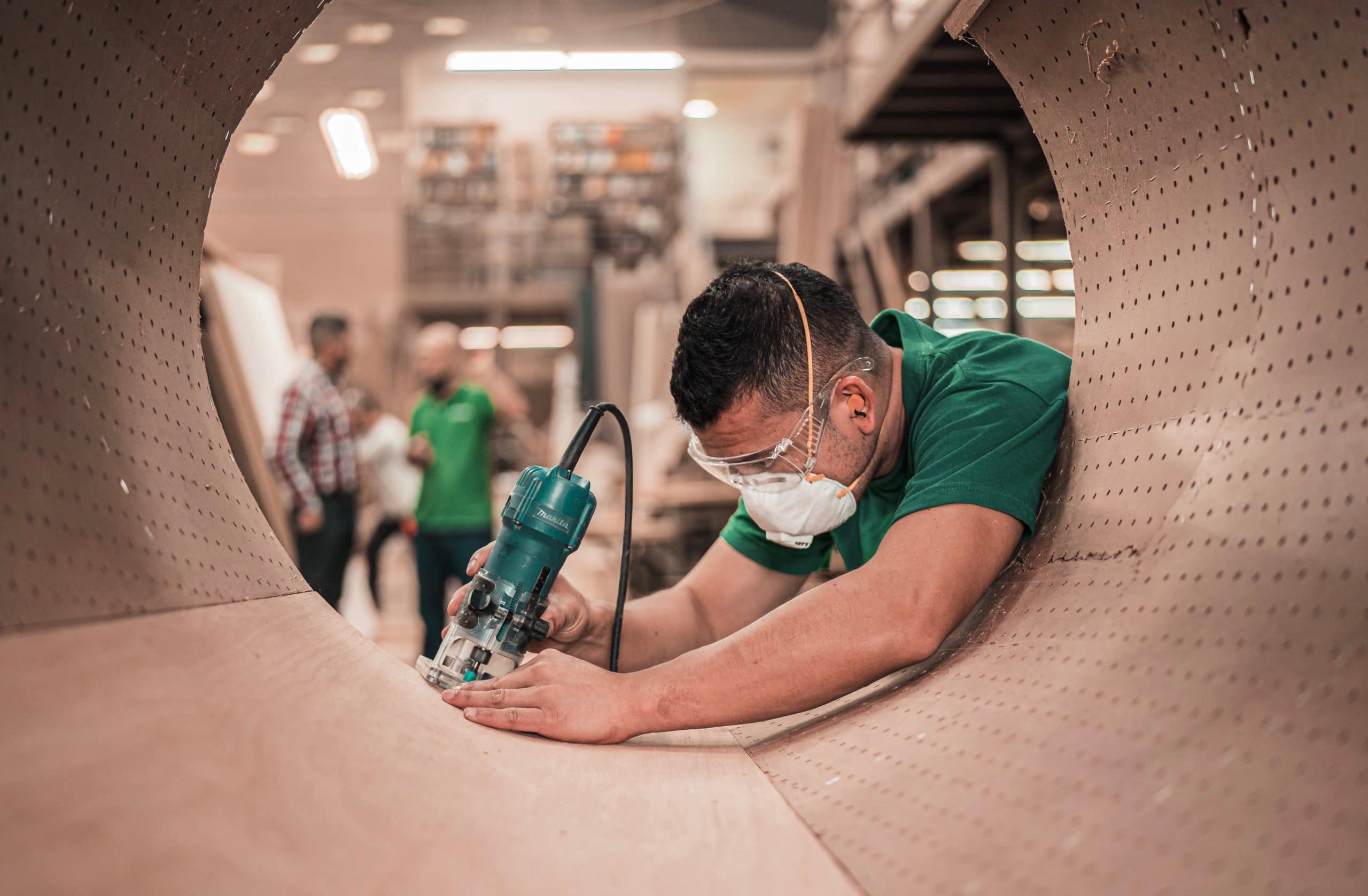Our research indicates that 57% of American manufacturing companies are growing at a rate of 5% or more annually. This means that you need a strong manufacturing sales strategy to stay competitive. This is easier said than done.
Factors like rising material costs and the pressure to reduce your prices from B2B buyers might make you wonder how to increase sales in manufacturing business development. Today, we look at a tried and tested manufacturing sales strategy that will help you increase your revenue. Let’s dive in!
Understanding sales procedures in manufacturing business
When you strategize a sales procedure, you ensure a clear view of:
- The production process.
- Market demand.
- What your customer wants.
An effective sales plan that aligns marketing strategies with industry trends is how a successful manufacturer differentiates from competitors with unique selling points.
So, how do you stay on top of your market? Based on our past experiences, a successful manufacturing company:
- Refines product offerings based on customer feedback.
- Optimizes production processes for efficiency.
- Leverages data analytics for sales forecasting and adapts to market demands quickly.
- Invests in targeted advertising campaigns.
- Researches and develops solutions for industry-specific challenges.
While these strategies help you get started, you can’t develop new ideas in a bubble.
Learning how to increase sales in manufacturing business strategies involves reaching out to others in your industry. Finding business partners with distributors for wider reach helps you better understand your evolving market.
A manufacturer that attends industry conferences to gain visibility is more likely to stay on top of emerging trends. At an event or similar opportunity, a manufacturer typically:
- Networks with industry leaders for insights.
- Can exhibit at industry conferences.
- Establishes long-term relationships with key clients.
- Offers promotional deals to attract new customers.
- Conducts market research for product diversification and supply chain optimization.
Drawing from our experience, the manufacturing company at the top is the one that wins the largest number of customers. Relying on a trusted customer base keeps your business afloat, but a company that collaborates with influencers in the industry and innovates to meet emerging market needs dominates the industry.
How to increase sales in the manufacturing business
The market is constantly changing, and manufacturers must stay flexible to move with it. For example, a successful manufacturer might need to diversify their product range or streamline their sales cycle.
How to increase sales in manufacturing business plans changes every year.
To compete effectively, our findings show that modern manufacturers:
- Support lean manufacturing, sustainability and green initiatives.
- Enact a strategy that upgrades products based on technological advancements.
- Offer multiple offerings, which diversifies product range to cater to various segments.
- Advertise competitive pricing.
- Develop a strong customer experience journey.
- Design persuasive marketing emails with a consistent brand.
Create alignment between your sales and marketing strategy
As per our expertise, your sales and marketing teams need to work together for your manufacturing sales strategy to be effective. Align what your marketing team learns with your sales reps’ employee training and motivation strategy.
Your marketing team has a lot of knowledge about getting new customers, which is useful for sales reps to know when they prospect. Based on our firsthand experience, marketing efforts and their results help sales reps better understand what attracts new customers. These include tactics like:
- Social media posts.
- Email campaigns.
- Customer surveys.
Use the valuable information your marketing team gains. A collaborative environment that trains the sales team on effective pitching techniques directly impacts sales.
With this information, your sales reps level up their communication with prospects and, in turn, convert more leads into customers. Ultimately, this is how to increase sales in manufacturing business strategies.
Automate your sales process wherever possible
As indicated by our tests, the key to a successful manufacturing sales strategy is workflow automation. Luckily, there are plenty of sales workflow automation tools available to manufacturers.
The first is lead gen forms. By capturing the lead details of every website visitor who submits a form, you ensure that your sales reps document and nurture each lead.Dial automation solutions are another way to upgrade the effectiveness of your sales team through cold call outreach. When you consider that it takes 18+ dials for a sales rep to connect with a prospect, it becomes clear how much these solutions promote your team’s productivity.
“On average, it takes 18+ attempts for a sales rep to connect with a prospect over the phone.”
Put simply, knowing how to increase sales in manufacturing business processes involves making your admin operations more efficient.
Customer relationship management (CRM) software is also a crucial part of any manufacturing sales strategy. From automatically managing your sales pipeline to allowing online self-service through customer portals, a CRM will expand your team’s productivity and ensure no leads slip through the cracks.
Manufacturers rely on CRM software to produce data analytics and business intelligence reports. This information:
- Provides benchmarks against industry standards for improvements.
- Analyzes sales data to identify growth areas.
- Measures the effectiveness of marketing campaigns.
- Makes informed financial management and investment strategies for continuous improvement.
Also consider how you can integrate your current platforms to automate your inventory management. This is an effective way to improve how to increase sales in manufacturing business management.
Perfect your sales pitch
Through our practical knowledge, the last part of any manufacturing sales strategy is all about closing deals. Here are some tips to make sure as many of your leads convert to new customers as possible.
Come prepared
Before you make your final pitch, you’ll need to remind yourself exactly who your lead is and what they’re looking to gain from your products or services. So, you should review all the notes you have on your potential customer and prepare to overcome any objections they may have when it comes to purchasing.
Following these steps helps your sales reps with their job as they negotiate with your customers.
Personalize your sales pitch
Our investigation demonstrated that 72% of buyers only respond to messaging that’s created with them in mind. So, you want to make sure that building a personalized sales pitch is part of your manufacturing sales strategy.
To create a personalized sales pitch, share the specific benefits your buyer will receive after making a purchase with you. You’ll need to highlight exactly how your potential customer will use your products or services and what they will gain from them.
Use the sales and marketing assets available to you
Drawing from our experience, you’ll want to give your buyer the resources they need to make a purchase decision to seal the deal. Here are some ways to do this:
- Share social proof and sales enablement content with them: Make use of the glowing customer reviews you get and the sales collateral you have to drive deals forward.
- Be transparent about the sale: To ease buyer anxiety, review everything from your payment terms to the warranties or guarantees your company can offer.
However, when considering how to increase sales in manufacturing business processes, the sales process doesn’t end with the closing of a deal. Don’t forget your after-sales service.
Follow up with the customer to see if they have any questions about their purchase. Implement a customer feedback strategy that evaluates customer satisfaction through surveys.
Using a CRM platform, you can make a note to touch base with the customer at a later date. Make note of what they already own so your sales team can cross-sell related products by highlighting the value they bring the customer. When you incentivize your sales team to use a strategy that upsells complementary products to existing clients, you bring greater value to your business.
A company that listens to customer needs and tailors solutions or offers loyalty programs to retain customers generates more repeat business. This implements feedback loops for continuous improvement, growth, and profitability.
Invest in your online presence
While networking and industry events are important factors to success, you should also consider your online presence and e-commerce sales. Marketing and advertising now exist online and offline, creating new pathways for new and existing customers to find you.
To move your products to the forefront and stay relevant in the online world, you must:
- Implement search engine optimization (SEO).
- Sell to a new generation of people.
- Ensure the execution of digital strategic partnerships.
Knowing how to increase sales in manufacturing business strategies in the modern day involves having an online presence.
Convert your website into a powerful sales tool
Your website should be more than just an online brochure. You can transform it into a powerful sales tool by:
- Implementing e-commerce capabilities.
- Offering detailed product information.
- Providing customer support through your website.
The advantage of an online site is that it’s available 24/7. Even when your employees have gone home, you can automate customer service tools or develop a product page that cross-sells to customers from other product lines.
This approach helps capture leads and facilitates easy transactions for your customers.
How to implement a manufacturing sales strategy
- Connect with marketing to better understand how to get new customers.
- Use data-driven insights from marketing efforts to shape how you communicate with prospects.
- Use sales automation tools to increase your team’s productivity.
- Prepare to handle sales objections in advance of your final pitch.
- Personalize your sales pitch for the buyer you’re speaking with.
- Give your buyer the information and resources they need to purchase.
Marketing ideas for manufacturing companies
Innovation is key when it comes to finding success as a manufacturing company. From our firsthand examination, a top manufacturer:
- Collaborates with complementary businesses for joint ventures.
- Engages potential clients through social media, like Facebook or LinkedIn.
- Promotes products at industry trade shows.
- Will frequently launch targeted email campaigns and advertisements.
- Chooses to educate customers on their products using blogs, brochures, and videos.
By incorporating these strategies and understanding key aspects of the manufacturing process, you’ll significantly boost your revenue in a competitive market.
Frequently asked questions
What is inventory management and how to improve it for B2B sellers?
Inventory management involves:
- Tracking raw materials.
- Work-in-progress inventory.
- Finished goods.
Improving inventory management can lead to reduced costs and increased efficiency.
B2B sellers can enhance their inventory management using software with these features. This simplifies the process by managing inventory from suppliers and generates recommendations on what to reorder.
What is manufacturing operations management (MOM)?
Manufacturing operations management (MOM) refers to the process of overseeing all tasks in the manufacturing process. This includes:
- Production planning.
- Quality control.
- Maintenance.
- Tracking labor.
Effective MOM ensures optimal use of resources and streamlined production. Understanding every step in this process helps you adjust your production timeline and expenses.
What is manufacturing process management?
Manufacturing process management (MPP) involves the planning, execution, and monitoring of the challenges involved in manufacturing. It focuses on improving:
- Production efficiency.
- Product quality.
- Reducing operational costs.
MPP integrates things like CRM software to streamline operations and improve product consistency.
Learn how to increase sales in manufacturing business with this free ebook!
Image credit: Cleyder Duque via Pexels






